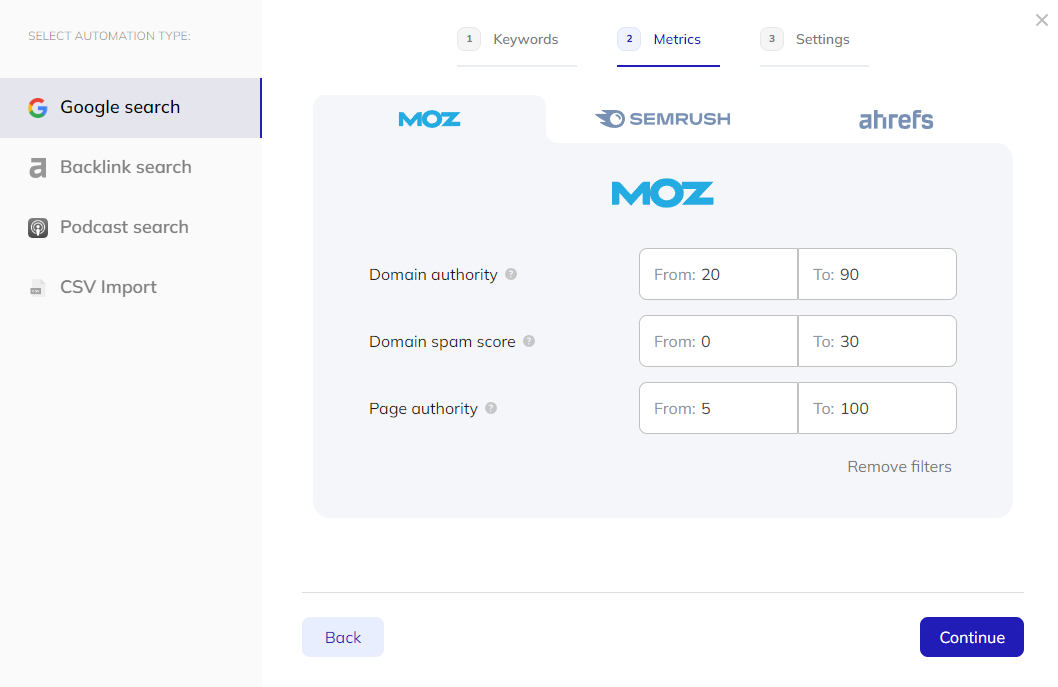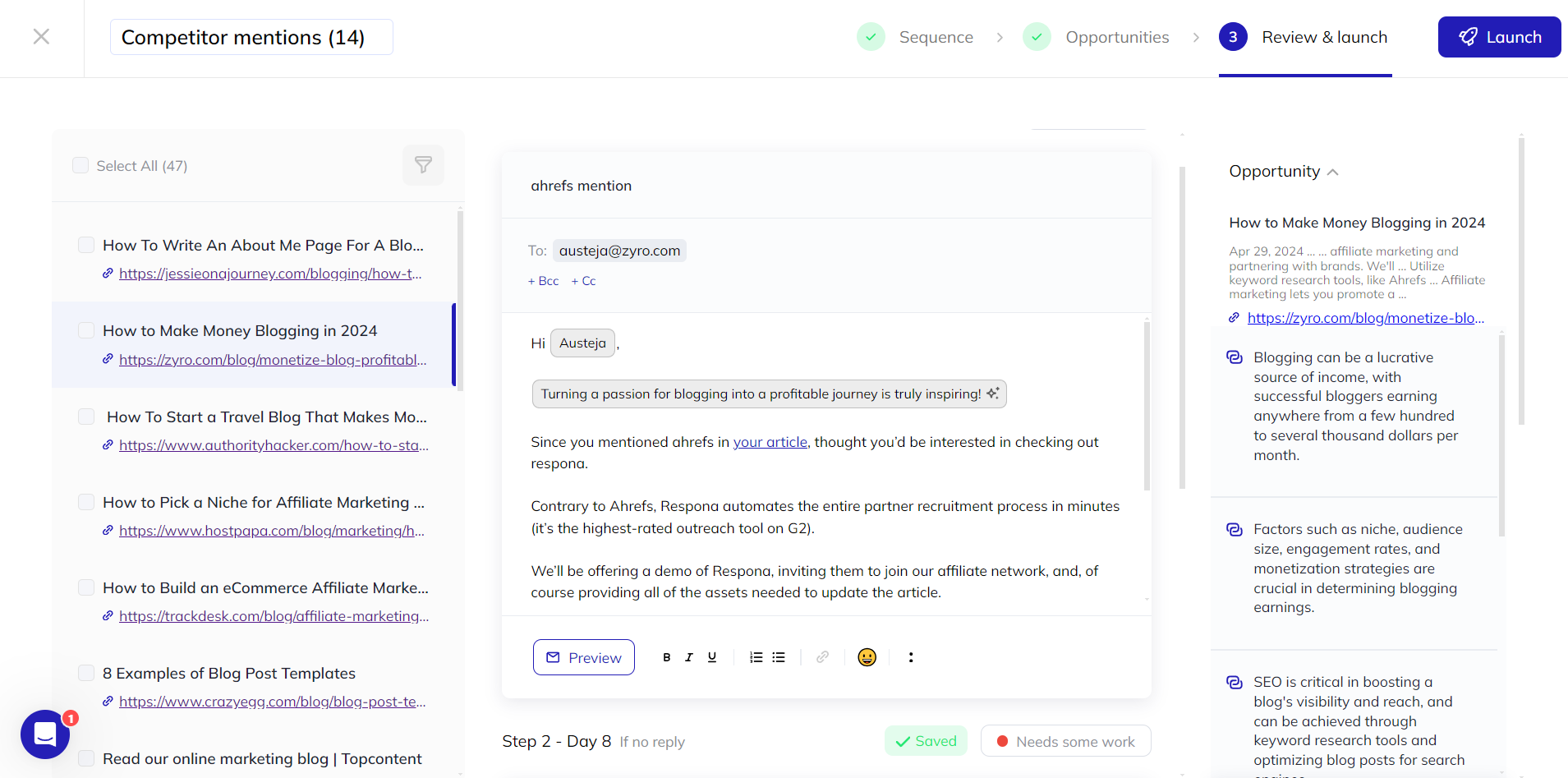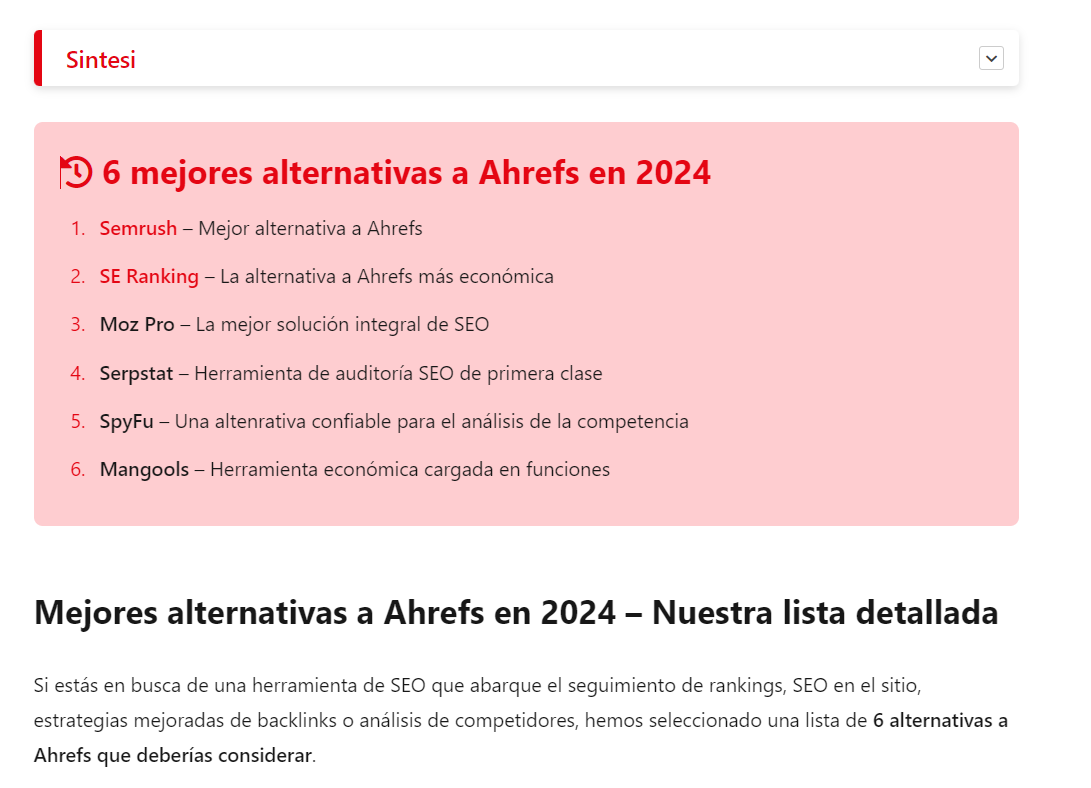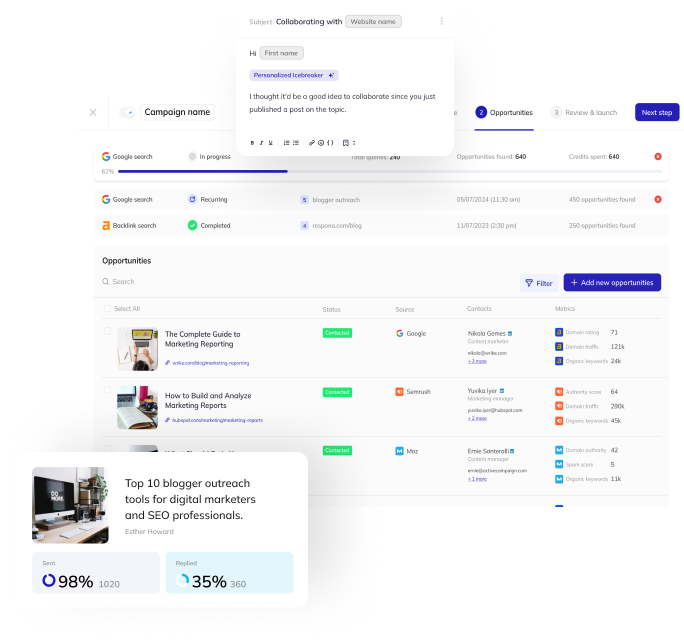As we move into 2024 and the world of SEO is overtaken with AI, backlinks as a ranking factor are only growing more important.
A heavy emphasis falls on the “right” kinds of links – not just any backlinks.
But what about international links? What’s their impact on your global SEO, if any?
Let’s dive into it.
Link building cheat sheet
What is International Link Building?
Much like regular link building, international link building is the process of getting other websites to link to you – usually through email outreach.
The only difference here is that the links are from international websites.
The goal of international link building is to improve your website’s ranking by directing some link equity from other sites, and, of course, put your website in front of new audiences.
Link equity, also known as PageRank, is a metric used by search engines to evaluate the quality and importance of a webpage based on the quantity and quality of inbound links pointing to that page.
The concept of PageRank was developed by Larry Page and Sergey Brin, the founders of Google, at Stanford University in the late 1990s. They realized that by analyzing the links pointing to a webpage, they could determine its authority and relevance, thus improving the accuracy of search results.
PageRank assigns a numerical value to each webpage based on the number and quality of incoming links, with higher PageRank indicating greater importance and authority in search engine rankings.

Even in 2024, after countless link spam updates, PageRank remains a core part of Google’s algorithm, and the importance of a quality backlink profile is higher than it’s ever been.
The keyword here being “quality”.
So, what makes a good link?
A good link is one that comes from a website or webpage that is topically relevant to the content of the linked page.
When the linking site’s content is closely related to the linked page’s topic, it signals to search engines that the link is contextually appropriate and adds value to both the linking and linked pages.
For example, if we were to link to an article about unnatural links from this section, it would do well to expand the topic for the reader, and make sense in the context of this blog post.
However, a link from here to a welding guide would do no good for us, or the welding website.
This applies to international links as well.
The authority of the linking site is the next factor in determining the quality of a link. Links from high-authority websites (like Backlinko, Ahrefs, etc.) are more valuable as they carry more weight in search engine algorithms.

Authority can be measured by factors such as domain authority, page authority, traffic, and overall trustworthiness of the linking site.
The presence of other links on the linking page can also impact the value of a link. If a page has too many outgoing links or contains unrelated or spammy links, it can dilute the authority passed through the link to your site.
Aim for links from pages with a restrained number of quality outbound links that are contextually relevant to your content.
Is International Link Building Any Different?
Yes, and no.
It relies on the same core principles as “traditional” link building: blogger outreach with the goal of securing a link on another site.
However, there are indeed some differences.
The first one being, of course, the language.
When you send an email in English, say, to a French content marketing manager, the first thought they have when they see it is “Spam”.
Unless they have an English-speaking team member that you specifically found and reached out to.
Additionally, it doesn’t always make sense to link to an English website from another language for the very same reason – their audience may not speak your language.
There are two scenarios in which international link building works best:
- If you have a subdomain or page in the same language of the linking site (or vice versa)
- When the link leads to a product/service page – preferably in the same language
So, for example, HubSpot – a company based in the United States, has a Spanish subdomain and links to Gaia Design, a Mexican web design company’s homepage.

This international link makes perfect sense for the user.
However, if they were to lead to Respona instead, the user would still understand the context of why we’re being linked, but their experience on our site wouldn’t be the greatest, since we don’t offer a Spanish version.
Another point to consider is where your audience actually lives.
Our target audience, for example, is in the United States.
However, a lot of our visitors come from India looking for email templates and tips for email outreach.
So, it would make sense for an Indian website to link to our English page about email outreach templates since that’s what the users are looking for.
It all depends on the user’s intent.
If you’re hesitant about whether an international link is valuable to you, just think: “Is the user getting what they need?”.
On a case-by-case basis, the answer will be different, so some caution is advised.
Now, let’s get into some tips for international link building.
International Link Building DO’s & DON’Ts
DO’s
- Align links with user intent: Ensure that the anchor text and context of your links align with the user’s intent and provide meaningful information that adds value to the user experience.
- Prioritize languages that you have a translation for: Focus on building links in languages for which you have translated content available on your website. This ensures that users who click on international links are directed to relevant and comprehensible content.
- Research and understand local keywords: Conduct thorough research on the target international market to understand local search trends, popular keywords, and industry-specific nuances. Use this knowledge to provide a better user experience for the searchers.
DON’Ts
- Don’t pay for links: Avoid purchasing links as a link building strategy, as this violates search engine guidelines and can result in penalties or a drop in search engine rankings. The white label link building way is through email outreach with the help of tools like Respona.
- Don’t engage in direct link exchanges: search engines can and will devalue such links and waste your time and effort.
- Don’t get links for the sake of getting a link: Focus on acquiring quality links from relevant and authoritative websites that provide value to your target audience. Aim for natural link placements within high-quality content rather than seeking links for the sole purpose of increasing backlink count. One relevant link can be 100 times more valuable than a thousand spammy links.
Top 3 International Link Building Strategies
Now, let’s take a look at three of the best link building strategies that work perfectly internationally, as well as domestically.
For all of these strategies, we will be using our own tool, Respona.
Competitor Mentions
The first international link building strategy on our list is competitor mentions.
The premise is exactly what it sounds like – you’re going to be reaching out to websites that have recently mentioned your competitors, and reaching out to them, asking to make niche edits and link to you as well.
Respona comes with a built-in competitor mentions link building campaign template – as well as a dedicated template for all other strategies in this article.

To use it, all you have to do is fill out a few simple fields.
In the first two, enter the name of your product and the URL of your website.
In the next two, enter the name and website of a competitor whose mentions you’d like to find.
They will be pulled into the search engine to find pages that mention your competitors but not you.
In the fifth field, enter 3-5 relevant keywords (to you, and your competitor).
You can also use Respona’s AI keyword suggestions to generate 20 additional keyword ideas and greatly expand the search.
In the last two fields, briefly describe what sets you apart from your competitors, and provide a brief incentive for your prospects to collaborate with you.
Alternatively, you can create an advanced campaign and get straight into the campaign editor, but using a campaign template, you will be speeding up the process by:
- Pre-setting your search criteria and auto-applying advanced search operators for finding very specific opportunities
- Building out your email outreach sequence.
When all fields are filled out, click “Use this template”.
The first step of the campaign flow is to review and/or edit your email sequence.

Because we used a campaign template, our email sequence is already good to go.
But let’s stop for a second and add some “oomph” to it.
First up, let’s check it for spam words to make sure we’re not using any:

Looks like we’re in the green, and our pitch has a high chance to receive a reply.
The data for this reply chance calculator comes from several million emails sent through our platform.
Let’s also add an unsubscribe link to give our prospects an easy way to opt out from further communications in case they are not interested.
Not only is this a GDPR requirement in Europe, but is also a great way to prevent some manual spam complaints.

In addition to the simple {first_name} variable, let’s also add an AI icebreaker variable to our pitch to make every single message we send unique.
It will “read” your prospects’ content and come up with personalizations for every single opportunity in your campaign.
And it also works in other languages!

When finished, let’s move to the next step – opportunities.
For the competitor mentions strategy, Respona uses the old-fashioned Google search, with a little help.

And by “help”, I mean some advanced search operators like:
- Inurl:blog
- Intext:
- -site:
These are automatically applied to your target keywords and company names/domains to narrow down the results to only blog posts that mention your competitors but not you.
Such as this article:

If you’re looking for results in a specific target country, you can also use the advanced location and language filters.
Click “Next” and apply some additional SEO filters to narrow the results down even further.

By default, Moz filters are available to all Respona users.
However, if you have a Semrush or Ahrefs account, you may also connect it to Respona and use these tools’ proprietary filters as well.
Click “Continue” again for some advanced settings.

The first option enables a simultaneous contact search – which is already locked and loaded to find the most relevant decision-makers at your target companies, including international SEO, content, digital marketing, and partnerships managers – at all seniority levels.
Respona will also automatically skip catch-all domains and use generic emails as needed to reduce bounce rate and increase the success rate of the contact search.
In the next field, you can provide additional instructions to your AI variables, like the Icebreaker we used in the previous steps.
You can both provide it with general suggestions like “limit the use of commas”, and train it with real examples of previous personalizations to make it sound more like you.
The final option on this page will make your search recurring – meaning, Respona will re-run your searches at a set time interval and automatically add new, relevant opportunities to your campaign, so all you have to do is log in and launch them every once in a while.
Click “Run automation” to start the search for link opportunities, their contact information, and personalize emails for each recipient in one go.

Results will start appearing on your screen as they are found, in real-time.
When the search is complete, you can move on to the final step of the campaign flow – Review & Launch.

Here, you can review your AI personalizations and make manual edits where necessary.
In addition to email addresses, Respona also finds the LinkedIn accounts of your prospects.

We recommend sending your prospects a connection request on social media in addition to your email to increase your chances of getting a reply.
When all messages are personalized, click on the Launch button to run some final checks before sending out your campaign.

Here, you can rename your campaign, select which email accounts you want to send your campaign with, change the schedule, campaign priority, sending strategy, and auto-CC/BCC.
Respona will also check to make sure none of your contacts have already been reached out to in your chosen time period, aren’t included in any other active campaigns, and that all variables are populated.
Once the campaign is launched, all you have to do is look out for responses.
Respona’s shared inbox makes this easy by bringing all of your connected mailboxes into a single, unified interface.

To get the most out of your link building, we recommend setting up long-term content partnerships rather than focusing on one-off collaborations only.
A good starting point for a long-term relationships would be to pitch a guest post.
Now, on to the next strategy.
Listicles
The process for the next strategies in Respona is very similar to that of the competitor mentions strategy we described above, so we won’t repeat ourselves and instead focus on what the strategy is and what makes it good for international link building.
Listicles (or Top X) articles are prime link building real estate – and a treasure trove of potential affiliates to recruit for your program.
This is because the majority of listicle placements are done for the purpose of putting affiliate links on one’s blog in an organic way.

For example, this article on SEO.com’s Spanish version is about the best link building software, which would be the perfect place to feature Respona.
While we don’t have any in-house team members that can manage Spanish content writing, there are tons of tools available that can help us translate a short blurb about Respona into Spanish.
Thanks, ChatGPT!
Note: this strategy is better suited for affiliate recruitment since placements on listicles are rarely offered for free (or for an indirect link exchange).
Product Alternatives
The product alternatives strategy once again leverages the already existing mentions of your competitors.
However, in a slightly different form – alternative pages, like this one:

What makes this strategy so well-suited for international website link building is the fact that the sole purpose of these pages is to provide users with alternatives to your competitors’ software.
So, even if you don’t have any pages in other languages, it would still make perfect sense for a website to link to you, because it matches user intent.
And, again, much like with the listicle strategy, if you don’t speak your prospects’ language, you can use free tools to translate a description of your product to add into the article.
Link building cheat sheet
Now Over to You
So, international link building – is it woth it?
For sure. No matter where in the world your backlinks are coming from, as long as they are relevant and come from quality sites, you’ll only benefit from having them.
Need help kickstarting your own international link building campaigns?
Don’t hesitate to start your 14-day free trial with Respona to see how we can help.
Frequently Asked Questions (FAQ)
What is international link building and why is it important?
International link building involves acquiring high quality backlinks from websites based in different countries to improve a website’s global search visibility. It is important because it helps to increase organic traffic, strengthen a website’s authority, reach a wider international audience in different markets, and may even serve some digital PR services.
How do I find international websites for link building opportunities?
To find international websites for link building, you can use tools like Ahrefs or SEMrush to conduct competitor research, search Google in different languages or location filters, reach out to industry-specific influencers or bloggers in different countries, or collaborate with global partners for link exchange opportunities.
Alternatively, you can seek the help of a link building agency or international link building service.
Does language play a role in international link building?
Yes, language plays a critical role in international link building as it affects user engagement and search engine rankings. It is important to create high-quality content in different languages to attract international audiences and leverage local keywords for better local SEO performance.
What are the potential challenges of international link building?
Some potential challenges of international link building include language barriers, cultural differences, varying multilingual SEO practices in different regions, and the need for local website exposure to build relevant and high-quality links. It is important to understand and address these challenges to achieve successful international and multilingual link building campaigns.
How can I measure the success of my international link building efforts?
You can measure the success of your international link building efforts by tracking key metrics such as organic traffic from different countries, domain authority of acquired backlinks, improvement in search engine rankings in international markets, and conversions from global visitors.
Analyzing these metrics will help you evaluate the effectiveness of your international link building strategies and make adjustments for future campaigns.







